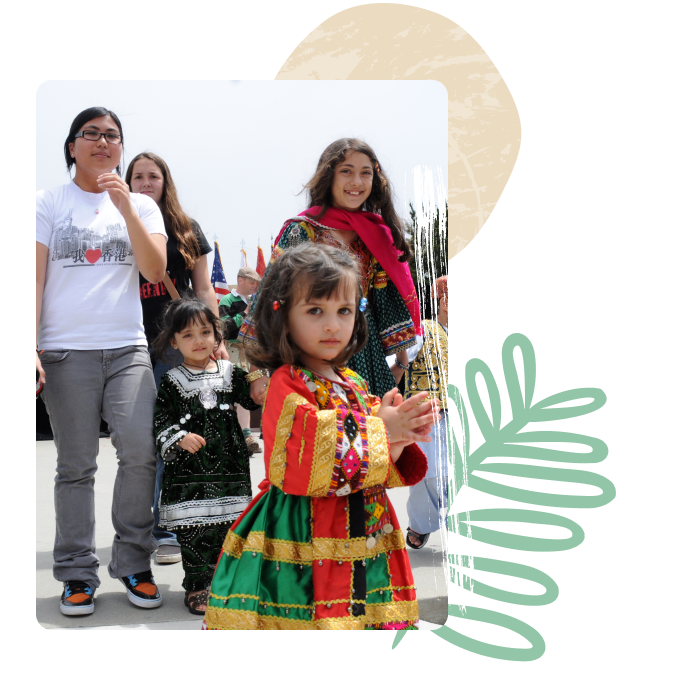Однако почти половине всех языков угрожает исчезновение.

Language is a stream of voices, which the living must keep flowing. If this stream dries out, the voices of generations and generations of people go silent.
PeopleЛюди по всему миру прилагают большие усилия для восстановления, ревитализации, документирования и продвижения языков, подверженных риску.
Целью проекта «Языки под угрозой исчезновения» является помощь таким людям в их важнейшем труде и в усилиях переломить тенденцию к утрате языков.

Endangered languages are not "doomed" - they can be revitalized. People and communities around the world are revitalizing their languages. Visit the Revitalization Directory to learn more about these programs. There are many different ways that language revitalization can happen. To learn and think more about these possibilities, visit the Learning & Help Center.
This work is about more than language. The forces that cause languages to become endangered are things that everyone should be concerned about. Everyone can work to change the root causes of language endangerment. Learn more about supporting language revitalization as an ally.
Термин «исчезающие языки» очень сложен. Слово «исчезающий» широко используется в данной области уже несколько десятилетий, и оно знакомо аудитории во многих странах мира. Это термин, который имеет значение для государственных органов, учреждений, НПО и финансирующих организаций. Некоторые политики, законы или гранты специально предназначены для «исчезающих» языков. Это объемный термин. Существует множество сложных и обоснованных причин, по которым некоторым людям и сообществам не нравится использование термина «исчезающий» по отношению к своим языкам. Среди причин, например, акцент на вымирание, опора на биологические метафоры языка или неспособность назвать основные причины утраты языка. Другие люди и сообщества предпочитают называть свои языки «исчезающими» и считают это слово приемлемым. Это слово имеет множество значений, и мы признаем, что в некоторых контекстах оно может быть неудобным или неуместным.
ELP предпочитает использовать более тонкие и более подходящие формулировки, когда это возможно, но иногда мы используем популярную терминологию, чтобы быть доступными и понятными для общественности.
Существует множество способов измерить и понять, насколько язык находится под угрозой исчезновения. ELP использует индекс угрозы исчезновения языков (LEI), который был разработан факультетом лингвистики Гавайского университета в Маноа в рамках Каталога языков, находящихся под угрозой исчезновения. При оценке языковой угрозы LEI учитываются четыре фактора: 1) количество людей, свободно говорящих на языке или использующих жестовый язык; 2) растет ли количество говорящих на языке или использующих жестовый язык, стабильно ли оно или сокращается; 3) изучают ли язык молодые поколения (передача языка от поколения к поколению); 4) в каких сферах жизни (областях применения) используется язык. Подробнее о LEI читайте здесь.
A dormant language is a language that does not have any living fluent speakers/signers. Languages that are not used are sometimes called “dead” or “extinct” (for example, in popular media or academia) but ELP does not use these terms for many reasons - learn more here. “Dormant” represents a sleeping state. When a language is sleeping, it can be awakened through revitalization.
Важно понимать, что любое число исчезающих языков - это лишь приблизительная оценка. Эта оценка основана на информации, доступной академическим исследователям, таким как команда Каталога исчезающих языков (Catalogue of Endangered Languages) проекта ELP при Гавайском университете в Маноа. Скорее всего, существуют языки, о которых исследователи еще не знают, и они не включены в эту оценку. Даже просто подсчитать, сколько языков существует, - задача сложная и неоднозначная.
Наши наиболее точные оценки количества исчезающих языков основаны на академических исследованиях и публикациях, общении с представителями языковых сообществ, государственных переписях, опросах внутри сообществ и других надежных источниках. Узнайте больше о наших исследованиях здесь.
Язык - это гораздо больше, чем просто набор слов или средство общения: языки отражают все разнообразие наших способов быть человеком. Коренные языки, в частности, несут в себе незаменимые системы знаний и культурные практики, которые имеют решающее значение для познания, существования, миров и мировоззрений сообществ. Язык лежит в основе самобытности и культуры.
Угроза исчезновения языков - это также вопрос несправедливости. Исчезновение языков отражает нарушения прав человека, разрушение жизни и сообществ, а также утрату знаний и культур. Проще говоря: причины, приводящие к исчезновению языков, делают мир хуже для всех.
В частности, для коренных народов ревитализация языка связана с налаживанием и обновлением межпоколенческих связей с землями, предками, родственниками, как человеческими, так и нечеловеческими, образом жизни, мировоззрением, социальными, культурными и духовными способами познания и бытия.
Ревитализация языка способствует благополучию: оно связано с улучшением психического, физического и эмоционального здоровья в сообществах, говорящих на коренных, исчезающих и маргинализированных языках. Ревитализация языка поддерживает права человека и самоопределение коренных народов, как это закреплено в Декларации ООН о правах коренных народов.
Поддержание языкового разнообразия означает поддержание мира с большим разнообразием знаний, образом жизни и пониманием того, что значит быть человеком. Лучший мир для языков - это лучший мир для всех.
Узнайте, как вы можете принять участие, способствовать развитию сообщества ELP и оказать поддержку процессов возрождения языков по всему миру. Мы сильнее, когда работаем сообща.
Ваше пожертвование не только поможет сохранить исчезающий язык, но и создаст благоприятные условия для его развития.
Найти методические руководства, учебные пособия и учебные материалы для различных областей возрождения языка – независимо от того, на каком этапе вы находитесь.